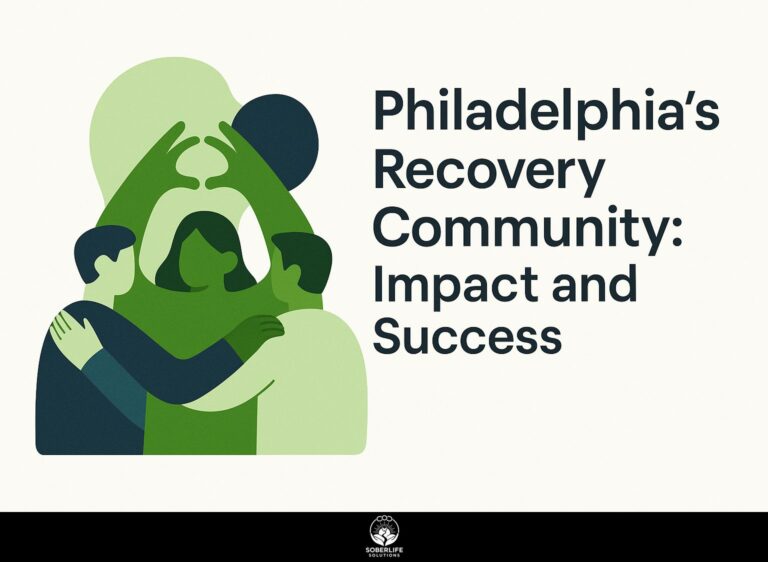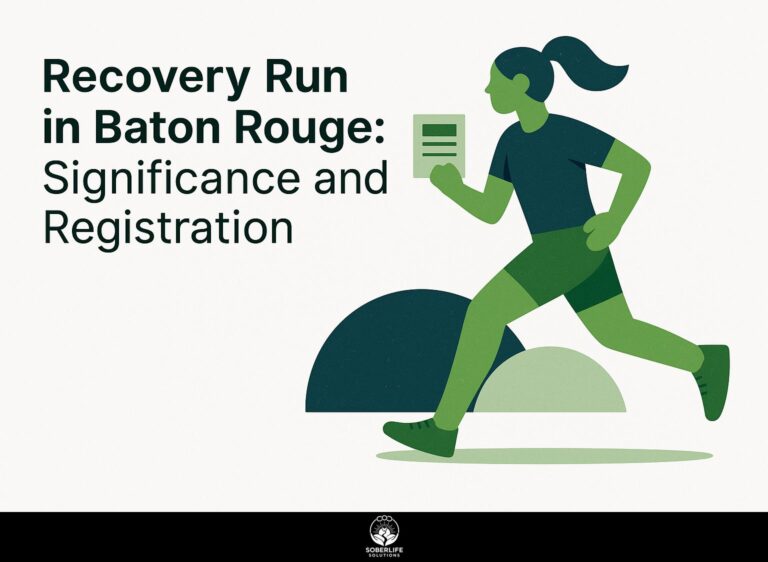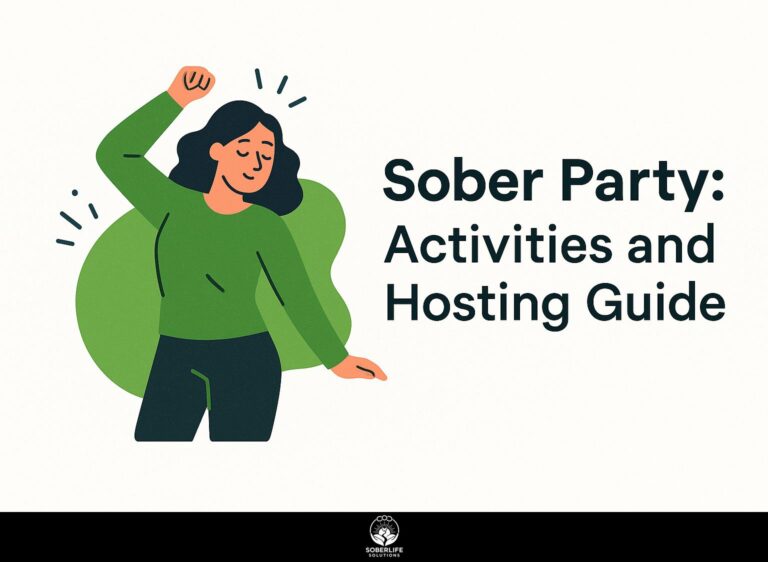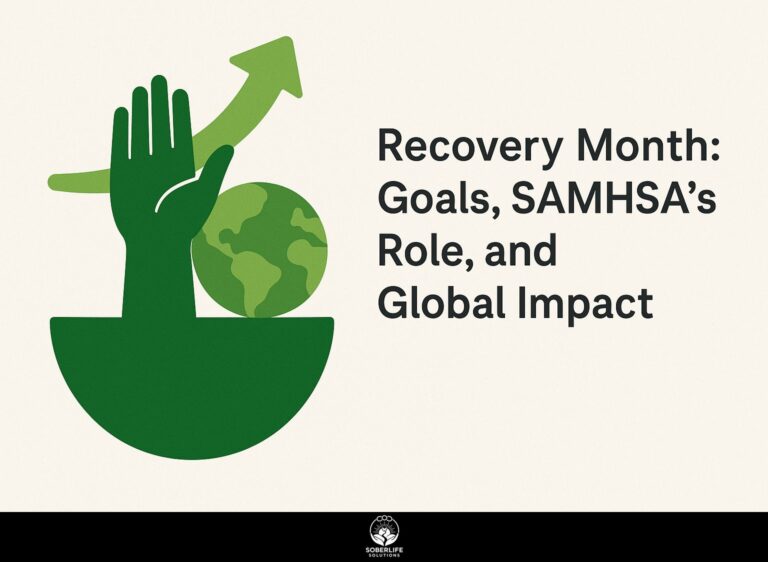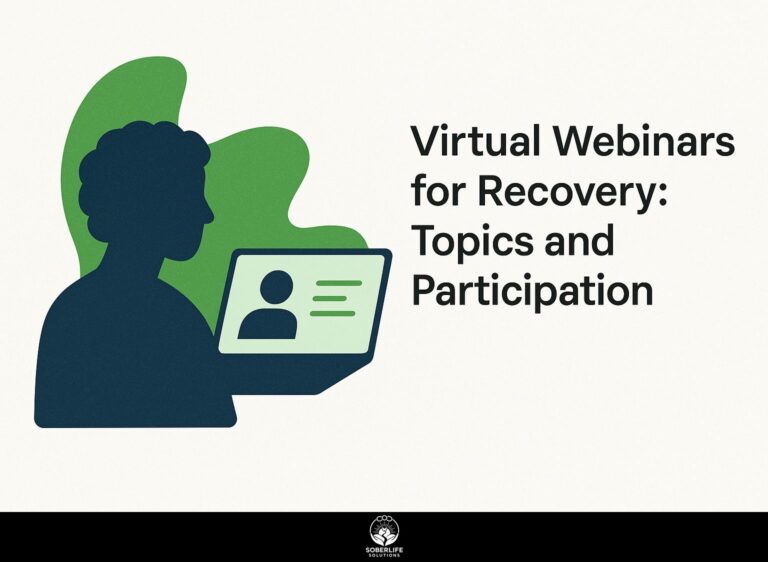Recovery Month: Advocacy, Impact, and Collaboration
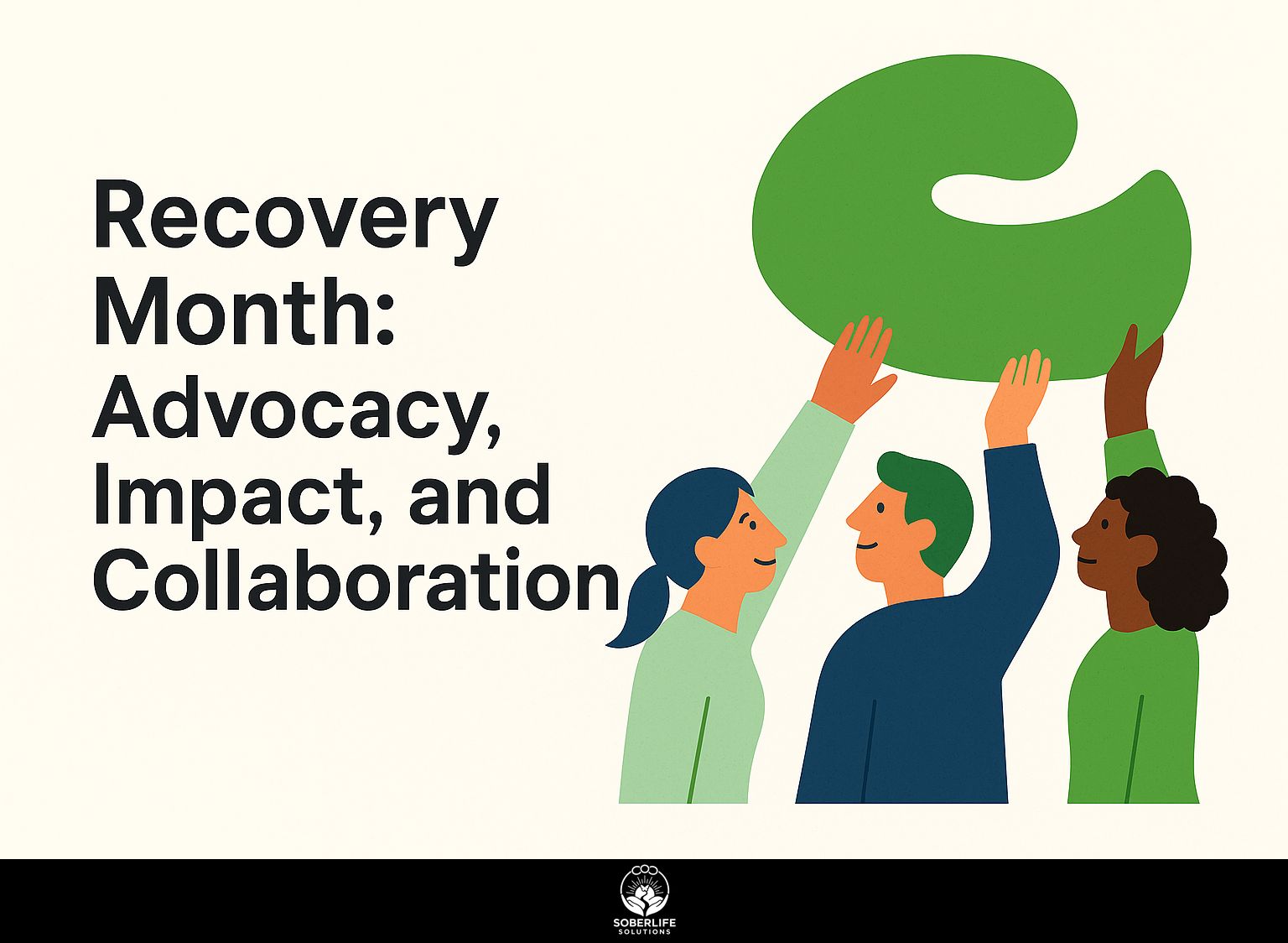
Recovery Month emphasizes the important process of people working to better their mental health and beat substance use issues. As Hannah Arendt noted, collaboration is essential for growth, a principle echoed by organizations like Alcoholics Anonymous and the World Health Organization. This article looks at the efforts to support recovery, the important numbers, and the teamwork that help spread knowledge and encourage improvement. Join us as we dive into the significance of this month and the collective efforts fueling health and wellness for all.
Key Takeaways:
History and Significance
Since its inception, Recovery Month has grown from a week-long event to a month-long celebration involving communities, advocacy organizations, and treatment services.
This change shows important steps forward, like the 2008 Mental Health Parity and Addiction Equity Act, which required insurance companies to provide the same level of coverage for mental health and substance use disorders as they do for other medical conditions (a comprehensive overview by the Department of Labor is available here).
In 2022, over 1,500 events were held nationwide, showcasing increased participation and awareness. Public engagement has surged as a result, with a 55% rise in social media conversations around recovery.
By encouraging teamwork among different groups, Recovery Month keeps offering a strong platform to support treatment resources and highlight the importance of recovery in the community.
Thematic Focus for the Year
Recovery Month chooses a theme every year to focus on different parts of recovery and the challenges people face when looking for assistance.
The theme for 2023 is `Recovery is for Everyone: Every Person, Every Family, Every Community.’ This highlights the importance of making recovery efforts accessible to everyone and recognizes that factors such as economic status and access to healthcare affect individuals and their families. According to the Kaiser Family Foundation, addressing these social determinants is crucial in promoting health equity.
Initiatives such as the National Recovery Organization’s community workshops intend to inform families about available resources. Meanwhile, local health departments are starting outreach programs to make sure that marginalized groups get the mental health and substance use treatment they need.
Involving community leaders in these efforts can increase influence and scope.
Advocacy in Recovery
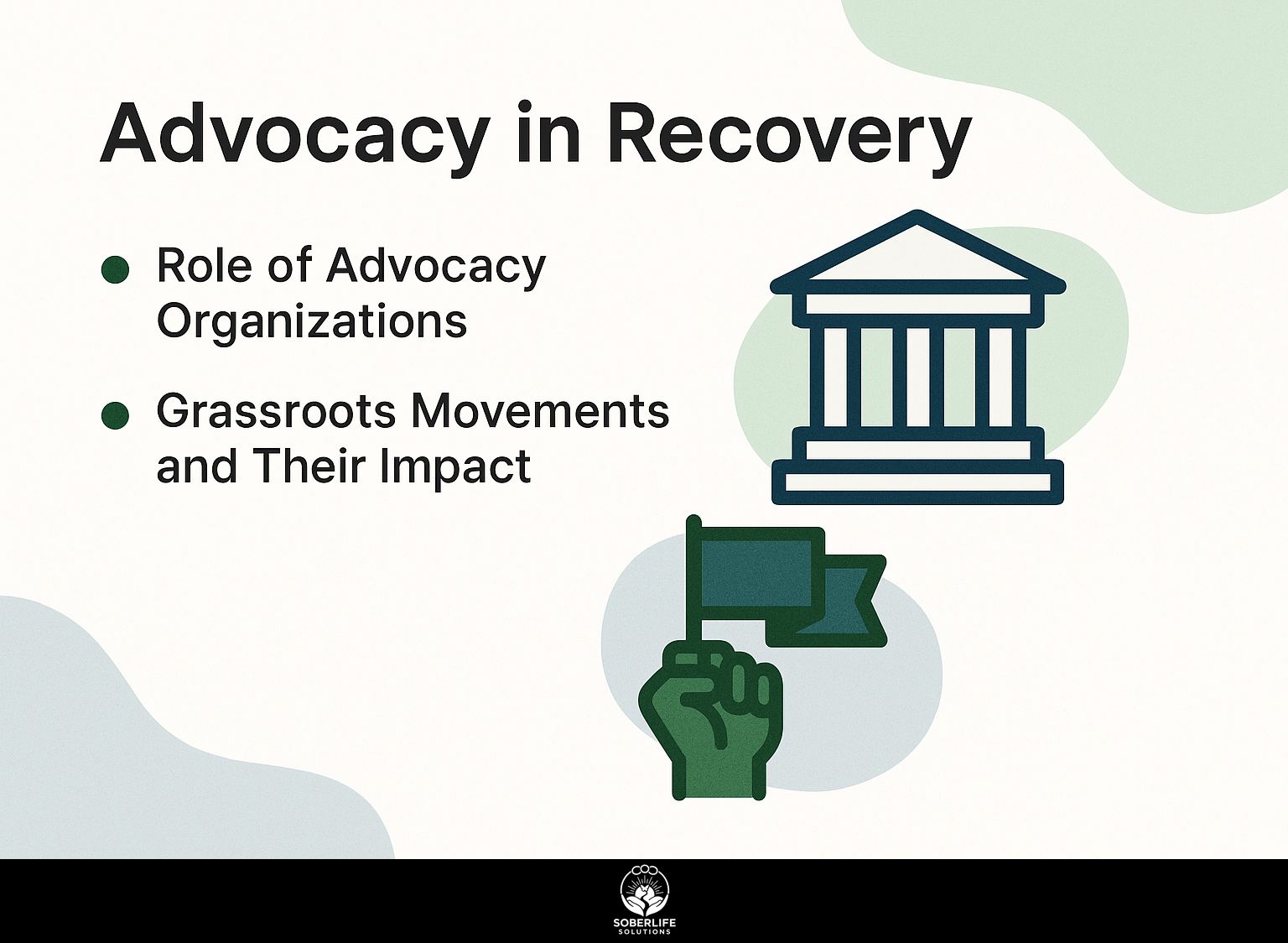
Advocacy is essential in ensuring equal access to health services and helping individuals with mental health and substance abuse issues receive care. Recovery Month: Goals, SAMHSA’s Role, and Global Impact highlights how advocacy plays a pivotal role in promoting recovery and raising awareness on a global scale.
Role of Advocacy Organizations
Groups such as the National Council for Mental Wellbeing and Alcoholics Anonymous work together to improve recovery support and lessen stigma.
The National Council for Mental Wellbeing focuses on policy reform, providing mental health services, and supporting advocates in local communities. Their initiatives have reached over 10 million people through programs that facilitate access to care and eliminate stigma.
Alcoholics Anonymous (AA) offers peer support to millions globally. They organize meetings that build community, responsibility, and strength, aiding many people in managing their recovery paths.
Both groups demonstrate the power of working together, showing that help from the community is important for long-term recovery, as highlighted by the work of the National Council for Mental Wellbeing.
Grassroots Movements and Their Impact
Local movements give community members the power to push for big changes in the system and build environments that help those recovering.
Local efforts such as community workshops are essential in creating these environments. For example, a monthly workshop can teach new skills and help with coping methods, leading to better personal results.
Support groups offer a safe space for individuals to share their experiences, which has been shown to strengthen community bonds. Because of this, many people say they can more easily get mental health services and are more aware of recovery resources.
Together, these changes help improve lives in the community. Worth exploring: Barrios Unidos Recovery Celebration: Highlights and Information
Impact of Recovery Month
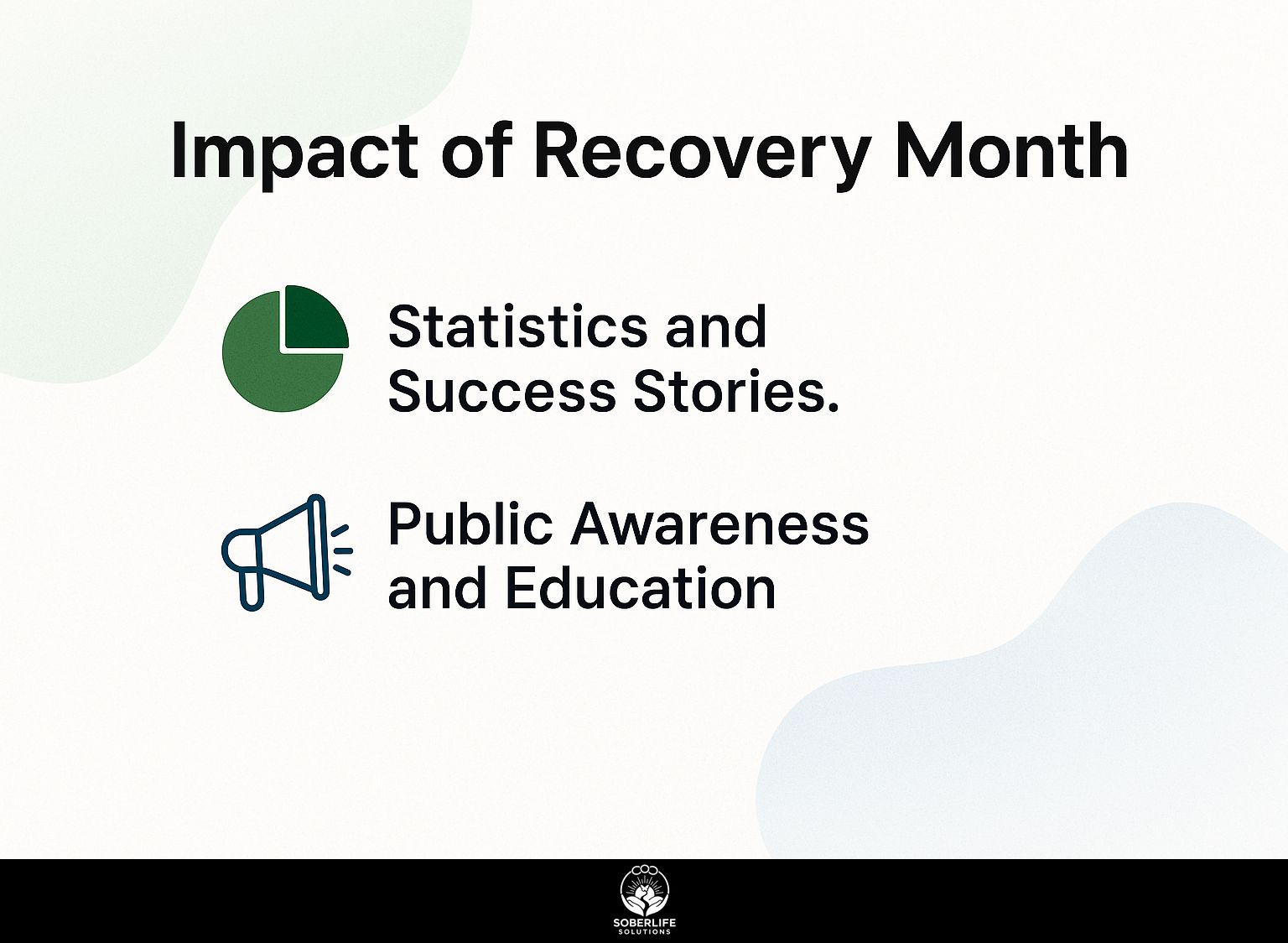
Recovery Month greatly raises public awareness and education about mental health issues, shown by a 50% rise in community events since it started. This growth underscores the importance of community engagement (our Recovery Jam in Little Rock event highlights the potential for impactful activities).
Statistics and Success Stories
Every year, thousands talk about how they overcame challenges during Recovery Month, emphasizing the importance of community help in their recovery process.
These shared experiences highlight tangible benefits; studies show that individuals engaged in support groups have a 50% higher chance of sustained recovery.
For instance, one participant, Sarah, shared how the encouragement from her local group made her feel accountable and connected, leading to a two-year sober milestone.
Similarly, John credited his recovery to a digital support community that provided daily motivation and resources, resulting in a 30% increase in his coping skills.
These stories emphasize not just the emotional but the substantial, measurable effects of advocacy and community support.
Public Awareness and Education
Public education efforts during Recovery Month have greatly helped reduce stigma and improve awareness of mental health and substance use disorders.
For example, community workshops, like those offered by local health departments, provided nearly 300 attendees with firsthand accounts and evidence-based information on recovery.
Webinars such as ‘Understanding Mental Health’ attracted more than 1,500 participants. Attendees listened to talks from experts and had opportunities to ask questions.
Concurrently, outreach programs handed out informative brochures and organized events that improved public views, shown by a 30% rise in positive opinions towards mental health help.
Together, these actions provided information and supportive spaces for people looking for help.
Collaboration Among Stakeholders
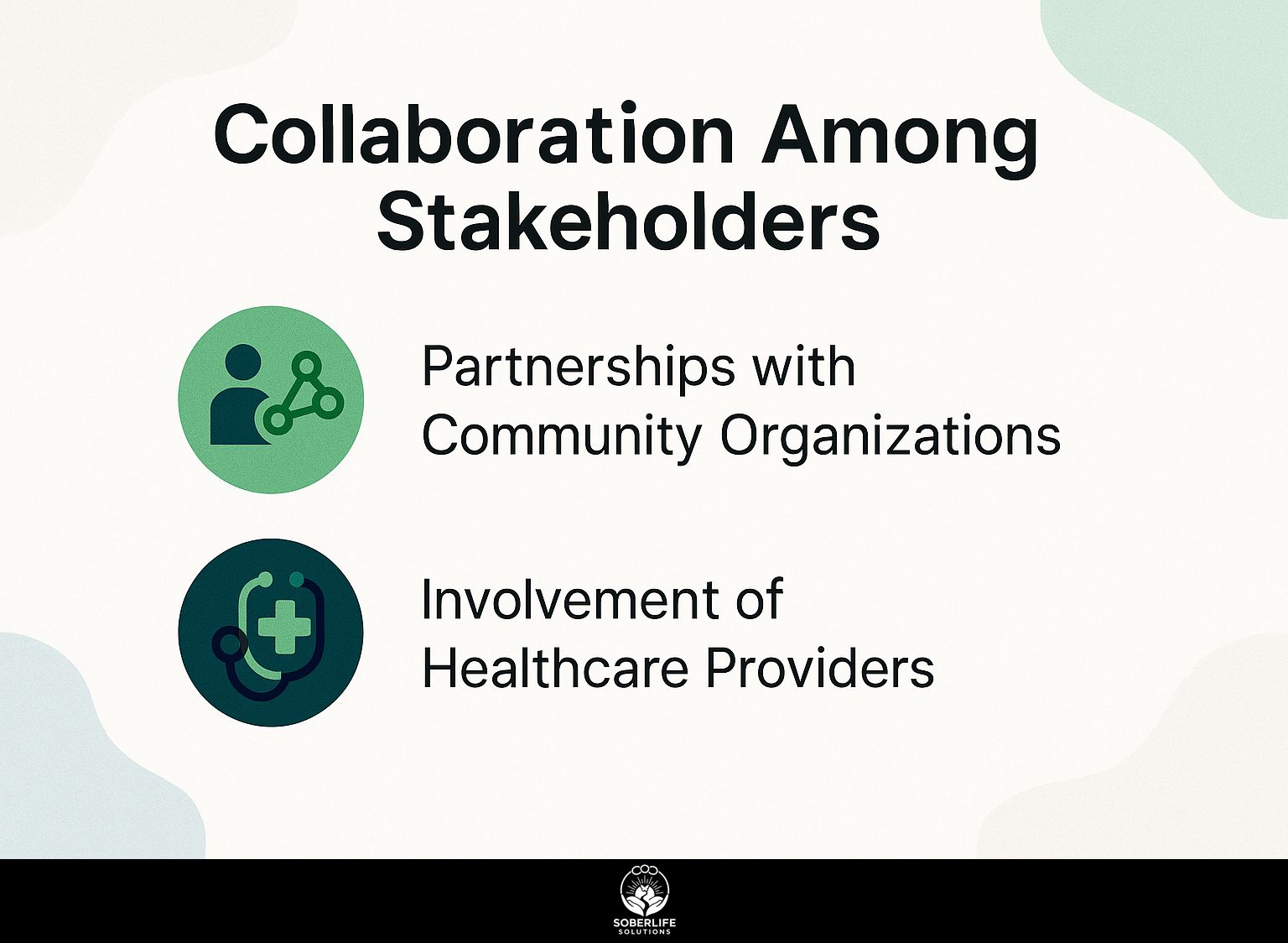
Working together with community groups, medical services, and advocacy organizations is important for building a lasting recovery system. If interested, you can explore how this collaborative approach is celebrated and emphasized during National Recovery Month.
Partnerships with Community Organizations
Partnerships between advocacy organizations and local community groups drive effective treatment options and support services for individuals in recovery.
The partnership between the National Alliance on Mental Illness (NAMI) and nearby recovery centers has shown positive results. Together, they offer workshops that address mental health challenges and substance use disorders, resulting in a 20% increase in participant engagement.
Success is measured through metrics such as retention rates and participant feedback. Working with groups such as Faces & Voices of Recovery uses social media campaigns to raise awareness, resulting in a noticeable rise in service availability. These partnerships improve how treatments are given and build a support network that people can depend on.
Involvement of Healthcare Providers
Healthcare providers play an essential role in helping people get better. They give important treatments and support people during their recovery.
To take part in Recovery Month, healthcare providers can start various programs.
- Host educational workshops that focus on recovery skills, involving local recovery advocates to share personal success stories.
- Distribute resource packets containing helplines, support group information, and educational materials.
- Consider collaborating with community centers to organize recovery-focused events, which can include yoga or mindfulness sessions to promote mental wellness.
- For instance, a local clinic could partner with a nearby facility to sponsor a recovery fair, demonstrating a united front in support.
These programs help build relationships within communities and support individuals in their recovery process.
Events and Activities
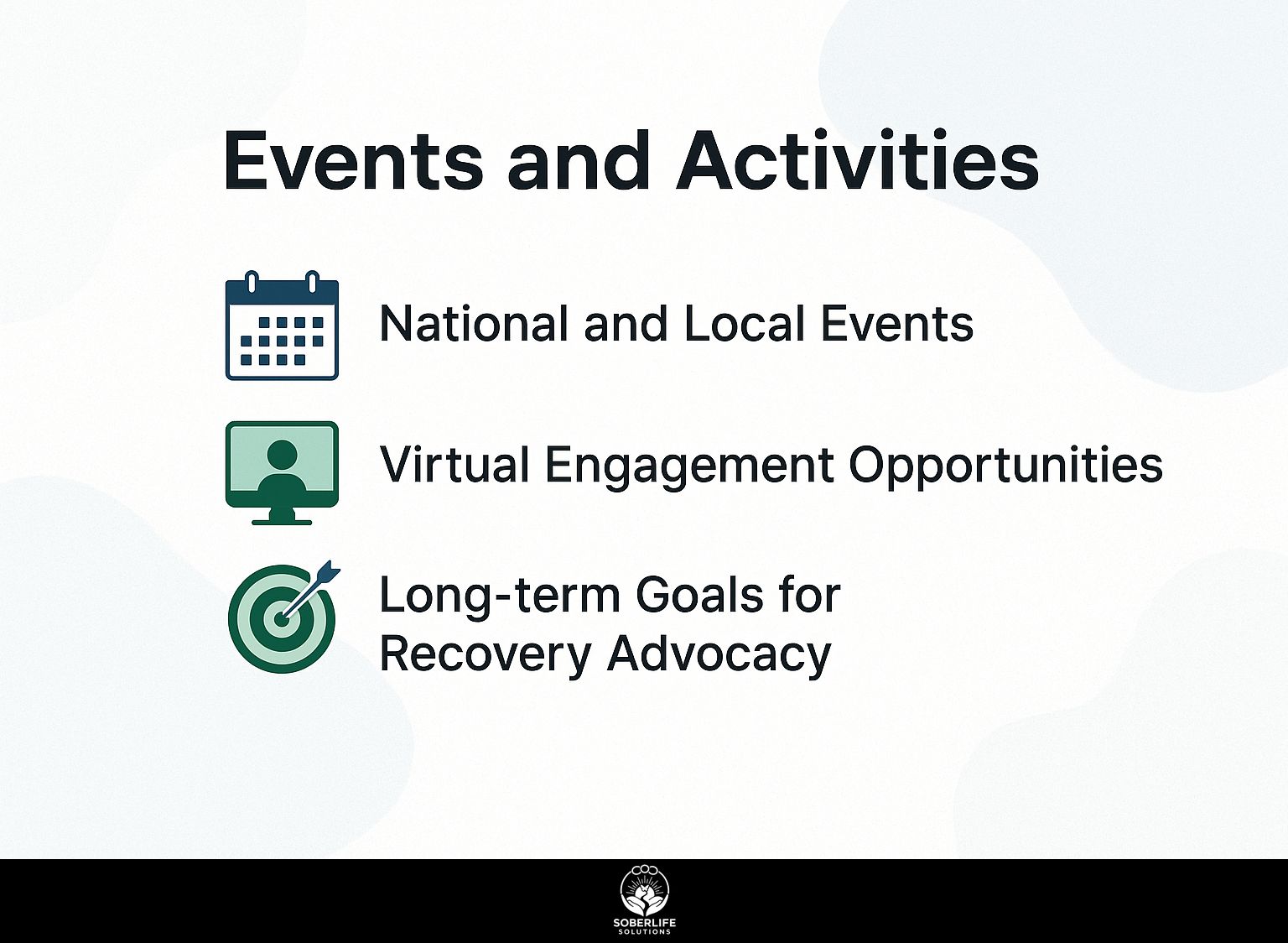
Recovery Month includes many events and activities aimed at raising awareness, educating people, and involving communities across the country.
National and Local Events
From large-scale national events to intimate local gatherings, Recovery Month provides ample opportunities for community members to engage and participate in the recovery movement.
National Recovery Month kicks off with events like the Recovery Walk in Washington, D.C., attracting thousands each year.
Locally, community fairs often showcase resources, featuring booths from treatment centers and support groups.
To participate, check local event listings on recoverymonth.gov or social media platforms to stay updated.
Engaging in these events can increase awareness, with last year’s Recovery Walk reporting over 5,000 attendees, illustrating the power of community involvement in supporting recovery and reducing stigma.
Virtual Engagement Opportunities
The increase in online activities provides new ways for people to join Recovery Month events, allowing more people from different locations to participate.
Many groups are holding important online seminars and training sessions during Recovery Month.
For example, the Substance Abuse and Mental Health Services Administration (SAMHSA) offers free webinars focused on recovery strategies. Signing up on their website is easy, and past events had more than 1,500 participants.
Local advocacy groups like Facing Addiction hold workshops to build community support. Watching things like what participants think and how much they join in can help these groups make their outreach better.
To stay informed, subscribe to newsletters from these organizations for upcoming events.
Long-term Goals for Recovery Advocacy
Achieving long-term goals for recovery advocacy requires a commitment to addressing the economic, political, and social barriers that hinder access to treatment services.
To improve access, advocacy organizations should set specific, measurable targets. For example, plan to raise local mental health service availability by 20% within three years through working with community health centers.
Another goal could be reducing stigma by hosting monthly awareness campaigns, measuring their impact through pre-and post-surveys to gauge community attitudes.
Implementation of training programs for healthcare providers can also be prioritized, targeting a 30% increase in culturally competent care within two years. This varied method helps track and improve progress over time.
Frequently Asked Questions
What is Recovery Month and why is it important?
Every September, Recovery Month is observed to increase awareness and knowledge about mental health and substance use problems, celebrate recovery, and spread the message that recovery is achievable. It is important because it provides a platform for individuals and organizations to come together and advocate for improved access to treatment, support, and resources for those struggling with mental health and substance use disorders.
What does advocacy mean during Recovery Month?
Advocacy during Recovery Month means actively promoting and supporting the needs and rights of people recovering from mental health and substance use problems. It involves advocating for better rules, laws, and financial support to improve access to treatment, lessen stigma, and aid recovery.
How does Recovery Month make an impact?
Recovery Month makes an impact by bringing individuals, families, and communities together to celebrate recovery and spread awareness about the prevalence and impact of mental health and substance use disorders. It helps reduce stigma and discrimination, promotes treatment and support choices, and motivates people to get help for their recovery.
What does working together mean during Recovery Month?
During Recovery Month, collaboration means joining forces with people in recovery, their families, healthcare workers, policymakers, and community leaders. The goal is to push for better access to treatment and support services, increase awareness, and encourage recovery.
How can I get involved in advocating for Recovery Month?
There are many ways to get involved in advocating for Recovery Month, such as attending or organizing events, participating in awareness campaigns, sharing your personal recovery story, advocating for improved policies and resources, and supporting individuals in recovery and their families. You can also join local advocacy groups or organizations that work towards promoting mental health and recovery.
What is the theme for this year’s Recovery Month?
The theme for this year’s Recovery Month is “Join the Voices for Recovery: Together We Are Stronger.” This theme emphasizes the importance of collaboration and support in promoting recovery and reducing stigma. It also shows how community and connections help people in their recovery process.

